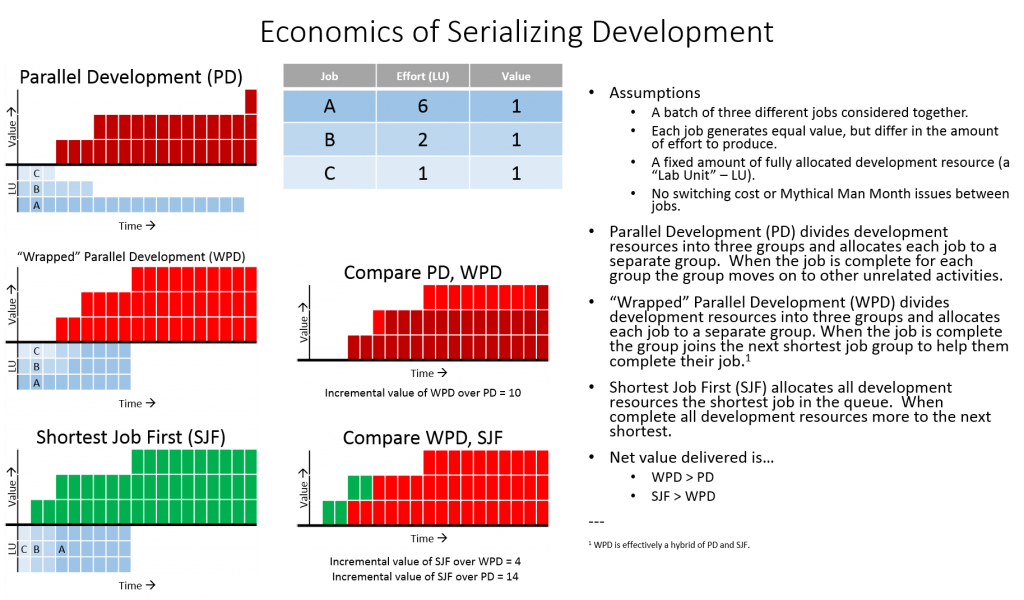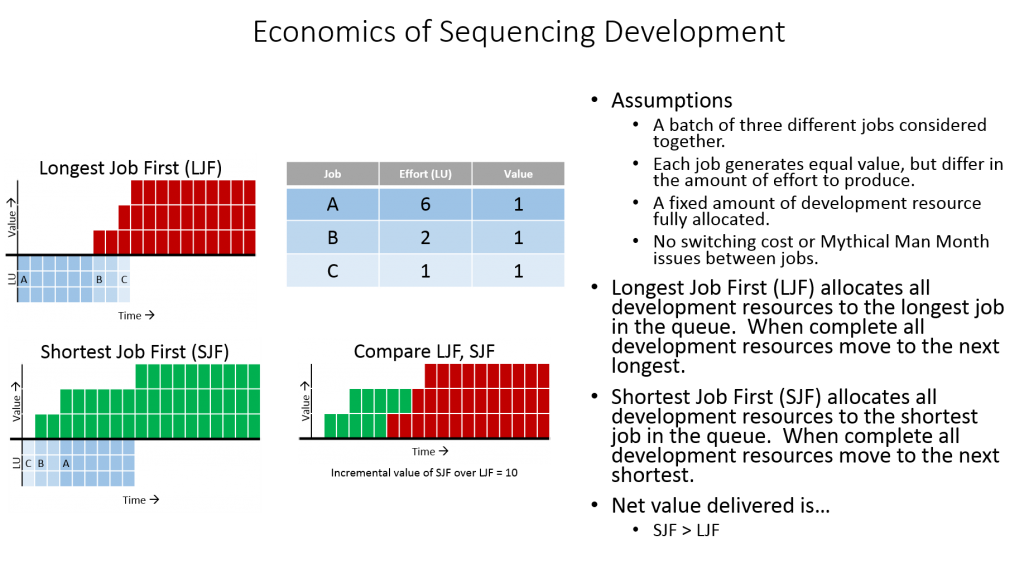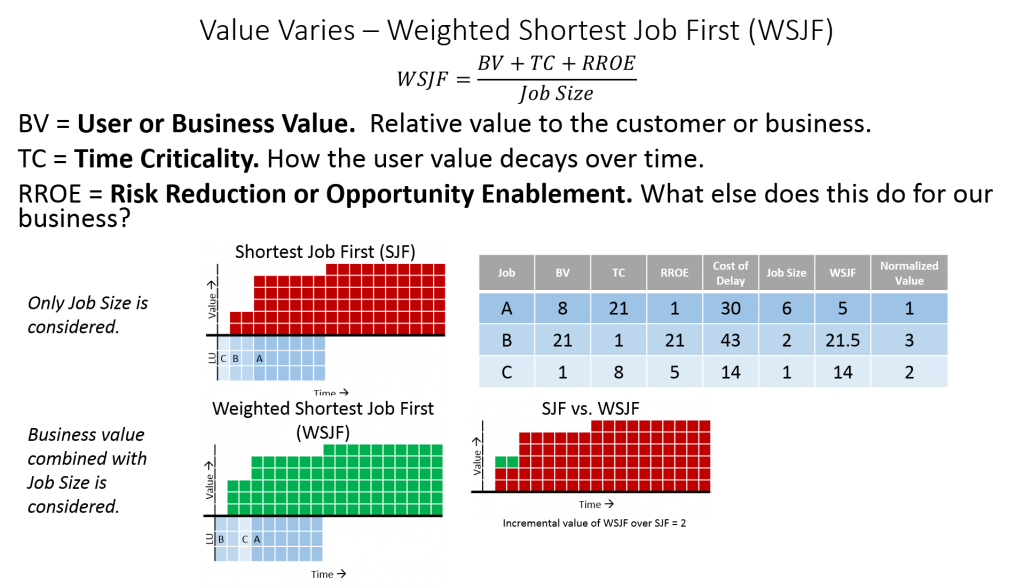Effective prioritization can be a challenge in any aspect of life. Simple linear sorted lists tend to encourage inconsistent prioritization criteria between any two items on the list. Weighted shortest job first (WSJF) teases apart a set of prioritization criteria then merges them back together again to create a prioritization that appropriately considers several factors that you may care about.
Last week I attended a class in Boulder, CO that enabled me to get my SAFe (Scaled Agile Framework) Program Consultant certification. I can now put the letters SPC after my name. That’s kind of cool and may help me to obtain some level of credibility sometime in the future [I can always dream ;-)]. SAFe itself is very cool. Think of it as a sane and rational approach to agile software development where the people paying the bills actually matter, but that’s a rant for another day.
One of the tools introduced in the class is called Weighted Shortest Job First (WSJF). I think it was developed by Dean Leffingwell and company (see WSJF), but it’s based on the work of Donald G. Reinertsen (see The Principles of Product Development Flow: Second Generation Lean Product Development. I haven’t read it yet, but it’s on my list.). The reasoning began by showing how serializing work (i.e. focusing) yield’s more value sooner than parallelizing work (organizational multi-tasking). I’ve tried to illustrate the thinking here…

Further, if the value generated by several jobs is equal then doing the shortest job first yield’s the greatest value over the long haul. Here’s a sketch that tries to illustrate this …

Of course, the value generated by different jobs is rarely equal so how do you sort appropriately to realize these optimizations? Enter WSJF. WSJF coaxes a bit more delivered value out of the above observations. Here’s a sketch that tries to illustrate this…

All six of my regular readers are now thinking, “That’s all well and good, but I don’t develop software. Where are the pictures?” Agreed and I’ll post more soon, but here’s a twist. I got to wondering if you could apply this thinking to life? In life, I’m not concerned about maximizing business value. I am concerned about maximizing happiness. I replaced the business value column above with happiness value and applied it to my daily todo list. The assumption was that I could weigh each item by how much relative joy I might obtain by doing them. The practical value of most of my todo list items appeared in the RROE column.
I’ll be damned if it didn’t work! The resulting prioritization did a very good job of mixing little, but annoying, jobs in with important jobs. Not so beneficial time consumers sunk to the bottom. It seemed to be very helpful in making me feel less overwhelmed. It gave me a way to sort through the onslaught in a way that made me feel like I actually was getting the most valuable things done first. It’s a bit analytical and heavyweight, but the benefit may outweigh the cost. Someone might get rich developing an app that makes this easy someday. I hope I get some credit for it. That would be fun.




